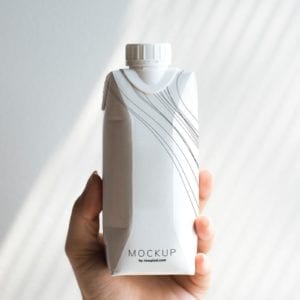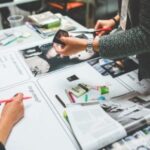While a title like “product designer” might seem fairly self-explanatory, it turns out to be a bit of a misnomer. That’s because understanding the question, what is product design, product design actually entails so much more than just designing a product. Well, good product design, anyway.
While a product designer does indeed create (or design) products, they are just a part of a larger design team. These product designers are typically employed by the manufacturers of most every product you can imagine. A product designer has to be a visual designer as well, who designs websites, furniture, technology, cars and anything else you can buy.
The list can even include food. No, a product designer isn’t in the kitchen creating a recipe (although they might be!) but they may design the look of a food product before it goes into production. A product designer may be behind a cookie’s packaging, name, marketing, etc.
They are artists, salesmen, marketers, architects, and engineers all wrapped into one. A product designer makes a practical and functional product as artistic and attractive to a consumer as possible. It takes creativity, consumer-savvy, and the know-how to take a product from ideation all the way to production.
To break things down further, the product development usually starts with that idea. If you’re the product designer, you’ll take that idea and go create a sketch, model or blueprint, depending on the product. This will often involve some computer-aided design (CAD) skills, but sometimes will start out with pencil and paper, depending on your preference.
Once you have the idea drafted out, you will do some market research to refine and revise your product embryo. This process sometimes involves focus groups and will be where the almighty budget comes into play. From here, you will work with graphic designers, engineers and other team members to turn your drafted idea into a prototype. Once you have the prototype, you repeat the market research before you turn your prototype into a product.
And voila – there you have it! The product design process in a nutshell.
What is a Product Designer?
A good product designer wears many hats but is ultimately responsible for the entire product creation process, the user needs, and experience of a product.
You might have heard a product designer also called the following:
- User Experience Designers
- Customer Experience Architect
- User Interface Designer
- Interaction Designer
- Information Architect
This is all dependent on the type of the company, the size, and the diversity of the department. A product designer may be responsible for some or all of the above. With these titles, there is an overlap in responsibilities.
An Example of What a Product Designer Does
Still unclear? No worries. Let’s try an example.
Let’s say you work for a company that makes backpacks. For whatever reason, your company decides they need a new backpack, a better backpack. So you take this idea and go, sometimes literally, to the drawing board.
Now, sketching the backpack is the easy part – it’s going to be relatively the same – but think about what you can change. You’ll gather input on the materials and see if any component can change to something new. You’ll consider the ergonomics and see if there’s a new design that can be better on a person’s back and posture.
And of course, you’ll design the look of the backpack. What’s the hot color right now? How can you incorporate it into the design? The look of a product is known as its aesthetics. While as a designer this may seem like the whole job – it’s only part of it. Sure, you’ve drawn up the coolest new backpack on the market – but does the thing work? Will it hold anything?
That’s where functionality comes into play. The backpack has to be able to hold things and be comfortable as well as look cool. You have to think about everything. You need to understand your customer and what they want and need. What problem does this product solve for them? Why is this something that will help their lives? You know what function a backpack serves, but what is it that this backpack does that others can’t? Now you’re marketing as well.
Key Responsibilities of a Product Designer?
As you can see, as a product designer, you will wear many hats, including product manager, designer, researcher, marketer, salesperson and of course, designer. While design is in the title of the role, it isn’t your only responsibility. There is so much more that goes into the “design” of a product in order to make it successful. While a product designer may consider themselves a designer first, they will still need to incorporate these other skills into their role like:
- Oral and written communication
- Time management
- Strategic thinking
- Project management
- Active listener
- Negotiating
- Being a team-player and more are all part of the job
As for the design itself, the best typically will have an area of expertise, or possessing being proficient in a few areas, but also capable in many others. You might not be the best salesperson, but you will still need to understand your consumer. That goes for every other area the job touches on.
Product designers bridge the gap between idea and production. You’ll convey your design through engineering, code, management, business requirements and more before it can reach consumers.
In addition, product designers are responsible for delivering a number of artifacts including:
- Prototyping: A variety of fidelity but serve as mock-ups created with the purpose of testing.
- Wireframe: Low-fidelity mock-ups that draft fast solutions for testing. For higher fidelity designs, it serves as blueprints.
- Journey Maps: Tells a user story as they progress through a task or process at an in-depth and high level.
- High-Fidelity Designs: The final mock-up of your design.
What is the Difference Between UX Designer and Product Designer?
Oftentimes the job title of a UX Designer and Product Designer can get mistaken as the same job. Both follow the 5-stage design process. The main difference is the UX designer is focused on the customer’s journey, while the product designer is concerned with the usability, customer’s experience, and the goals of the business.
It’s a lot of work, with a lot of moving parts, but ultimately if creating products is your passion, a career in product design is the challenge you’re looking for.

 619-684-8800
619-684-8800
